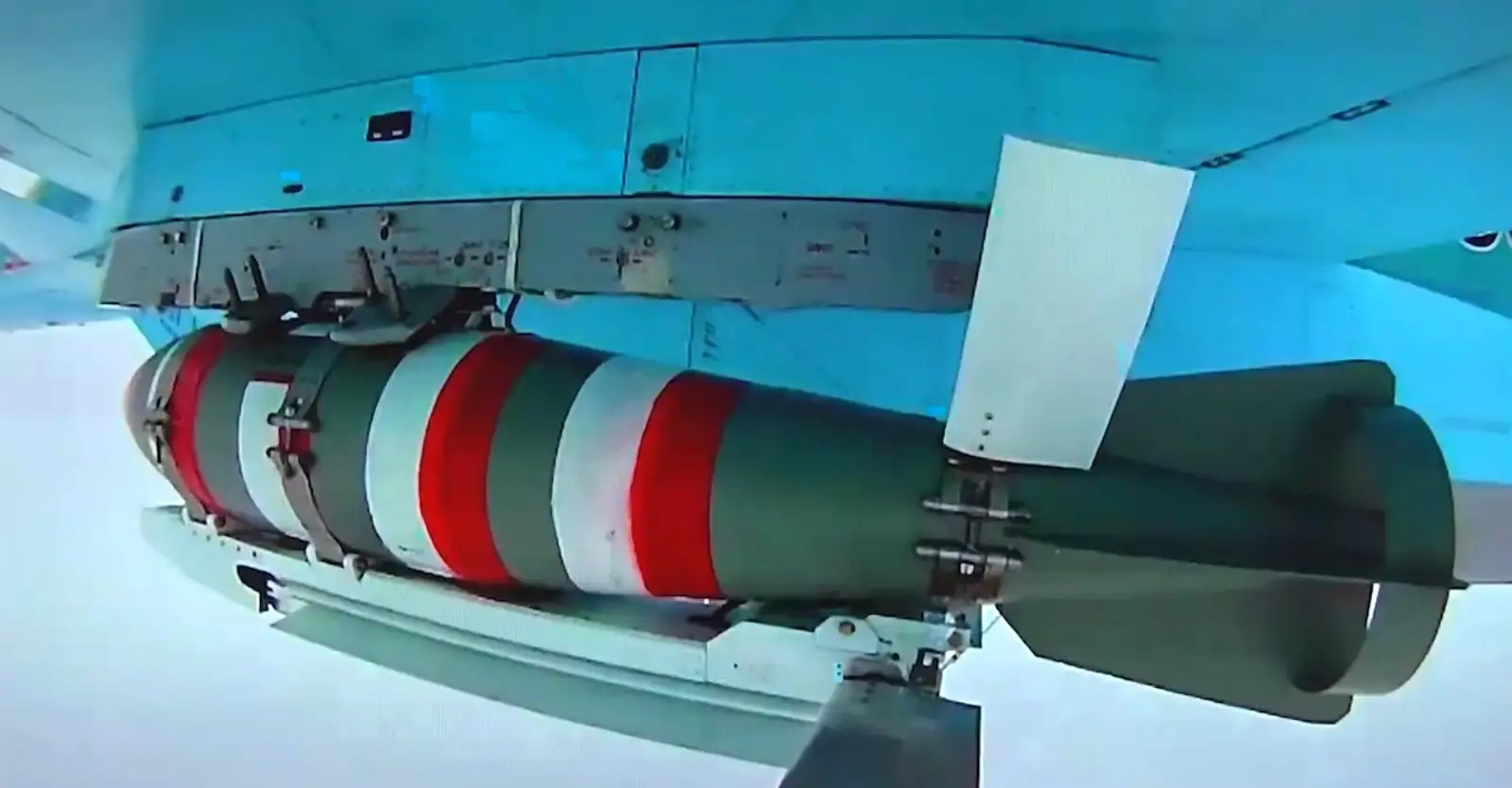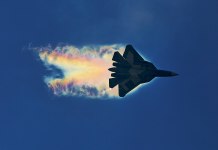Recent reports indicate that Russian forces may have lost a significant battlefield advantage—their capacity to deliver precision strikes using UMPK-equipped glide bombs.
On February 25, Russian military blogger Fighterbomber noted that frontline bombers continue to deploy UMPK-modified bombs against Ukrainian targets with the same frequency as before; however, these munitions are now missing their intended marks. He attributes this decline in accuracy to Ukrainian satellite navigation (SATNAV) jamming efforts.
“They do not hit,” Fighterbomber stated, emphasizing that Ukrainian forces have developed portable and mobile electronic warfare stations. These stations are reportedly deployed extensively along the line of contact, rendering satellite-based navigation systems for various munitions, including UMPK bombs, ineffective. He further commented, “All satellite correction systems have officially left the chat.”
This assessment was subsequently highlighted by Forbes on February 26, which reported on Ukraine’s effective jamming of Russian glide bombs across the front line, thereby neutralizing one of Russia’s primary battlefield advantages.
Following this, other Ukrainian sources and several Russian bloggers corroborated the diminished effectiveness of Russian UMPK bombs due to Ukrainian electronic warfare measures.
These developments underscore the dynamic nature of modern warfare, where electronic countermeasures can significantly impact the efficacy of advanced weaponry.
UMPK Bombs
The Unified Gliding and Correction Module (UMPK) is a Russian-developed kit designed to convert unguided aerial bombs into precision-guided glide munitions, functioning similarly to the U.S. Joint Direct Attack Munition (JDAM) system.
By attaching the UMPK to bombs such as the FAB-250, FAB-500, FAB-1500, and FAB-3000, these munitions gain enhanced accuracy and extended range.
Key Components & Functionality:
Aerodynamic Enhancements: The UMPK kit includes folding wings and control surfaces that deploy upon release. This enables the bomb to glide towards its target, thereby increasing its range and allowing aircraft to release munitions from safer distances.
Guidance System: Equipped with a satellite navigation module, the UMPK utilizes Russia’s GLONASS system to steer the bomb accurately to designated coordinates. In environments where satellite signals are compromised due to jamming, the system defaults to an inertial navigation system, which, while functional, offers reduced accuracy and may result in the bomb deviating from its intended path.
The integration of the UMPK has significantly bolstered the Russian Air Force’s capability to conduct precision strikes using existing stockpiles of unguided bombs, providing a cost-effective solution to modernizing their aerial arsenal.
Past Performance
Russia first introduced the UMPK kits around March 2023 for use with its FAB-500M62 bomb.
These kits enable aircraft such as the Su-34, Su-35, and Su-30SM to conduct precision strikes from medium altitudes, targeting Ukrainian positions from distances up to 70 kilometers, thereby staying beyond the reach of Ukrainian air defenses.
Following initial trials, the performance of UMPK-equipped bombs stabilized, leading to the commencement of serial production. The Su-34, with its substantial payload capacity, has since become a formidable platform for delivering these enhanced munitions.
The UMPK kits are designed to minimize exposure to air defense systems. Once released, the bombs have a brief flight duration, making interception by traditional air defense systems challenging. Enhancements to the UMPK have improved accuracy and introduced features such as in-flight target coordinate programming, increasing operational flexibility.
However, the combination of a short flight time, low radar and thermal signatures, and a steep descent trajectory complicates both kinetic interception and electronic jamming efforts.
Yuriy Ihnat, spokesperson for the Ukrainian Air Force, has repeatedly emphasized the difficulties in intercepting UMPK-guided bombs, noting their impact on Ukrainian defenses.
The relatively low cost of FAB-series bombs, coupled with Russia’s extensive stockpiles from the Soviet era, has resulted in the deployment of hundreds of UMPK-equipped bombs weekly at peak usage, posing a persistent threat to Ukrainian forces and infrastructure.

Are UMPK Bomb Failures Rampant
While the Fighterbomber Telegram channel has provided valuable insights into Russian air operations, it’s important to recognize that no single source can comprehensively cover the activities of multiple squadrons across various fronts.
On February 27, 2025, the Two Majors Telegram channel reported the extensive use of UMPK-equipped FAB bombs in the Kursk sector, stating:
“The enemy is unable to effectively build a system for substituting satellite coordinates.”
This suggests that Ukrainian forces are struggling to implement effective satellite navigation (SATNAV) jamming or spoofing in that area. Spoofing involves altering signals to provide false positional data to enemy precision-guided munitions (PGMs).
Additionally, on February 26, two Majors shared a video showcasing a precise UMPK strike on a building housing Ukrainian personnel, including UAV operators, at a distillery. An earlier video from February 23 depicted a successful heavy UMPK FAB strike on a structure sheltering Ukrainian UAV crews.
Fighterbomber has noted that UMPK bombs are more effective against larger targets and recommends deploying salvos of four bombs to ensure the destruction of smaller objectives. However, the blogger also pointed out the scarcity of large targets near the frontline, leading to situations where up to 16 bombs might be required to eliminate a smaller target.
These reports highlight the variability in UMPK bomb effectiveness, influenced by factors such as target size, the robustness of Ukrainian electronic warfare measures, and the specific operational environment in different sectors.
What’s Changed In 2025
It’s very likely that Ukrainian EW capabilities have evolved significantly since UMPK bombs were introduced. Ukrainian forces have also likely received extensive assistance from the West in improving their EW capabilities.
The fact that the battlefront has remained relatively stable would have facilitated the proliferation of SATNAV jammers along the front line and their well-considered positioning based on the deployment of Ukrainian air defenses. Also, the sophistication of Ukrainian EW systems has gone up in two years.
It’s likely that the extent of coverage and/or effectiveness of the Ukrainian-developed Pokrova Electronic Warfare (EW) system have increased. The system is primarily designed to “spoof” satellite navigation signals. Pokrova proved effective against Russian Shahed drones.
The Pokrova coverage is now near nationwide and includes the entire line of contact.
Poor Backup Inertial Navigation System
As stated earlier, in case of SATNAV jamming, PGMs often revert to backup inertial navigation systems (INS). It’s likely that the Russian INS fitted on the UMPK kit is not very sophisticated. The intent may have been to keep costs low. Its relative inaccuracy would amplify the deleterious impact of SATNAV jamming.
Conclusion
The evidence indicating reduced accuracy of Russian UMPK bombs is not definitive, but the possibility is real.
Initially, Ukraine couldn’t disrupt UMPK strikes because its jamming was patchy or underpowered against the bombs’ range and flight profile. Now, with a denser, more capable electronic warfare (EW) network, it’s hindering Russia’s operations, forcing a rethink of tactics or technology.
It’s unlikely that UMPK accuracy has been degraded along the entire front. For example, Ukrainian EW coverage of the Kursk region is likely poor, if not nonexistent. Similarly, the Kherson region’s vast expanse may pose challenges for comprehensive EW coverage.
EW is a cat-and-mouse game; it’s quite likely that Ukrainian forces have gained an edge at this point. However, it’s plausible that Russian forces will adapt to neutralize the Ukrainian advantage.
Russian countermeasures could include upgraded jam/spoof-resistant SATNAV modules, more accurate backup inertial navigation systems (INS), or the use of optical guidance.
The obvious downside of such UMPK upgrades would be the increase in costs.
- Vijainder K Thakur is a retired IAF Jaguar pilot, author, software architect, entrepreneur, and military analyst.
- VIEWS PERSONAL OF THE AUTHOR
- Follow the author @vkthakur




